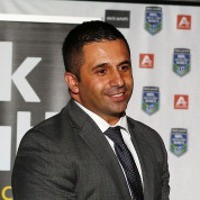

The chief executive of Dick Smith has opened up about the rapid transformation of the consumer electronics brand, revealing the extent of the changes that took place from the time private equity outfit Anchorage Capital purchased the company to its float on the Australian Stock Exchange 12 months later.
Speaking at the Australian Private Equity and Venture Capital Association (AVCAL) Alpha conference in Melbourne on Thursday, Nick Abboud says he has big plans for the Dick Smith chain, which Anchorage bought for $20 million in November 2012 and floated with a market value of $520 million in November 2013.
“We want 450 stores, online to get to 10% in two years, and to bring costs down,” says Abboud, who led a restructure of Myer before joining Dick Smith.
“You would assume you could double online again in 10 years.”
Abboud was joined on the panel by Phil Cave, managing director of Anchorage Capital and chairman of Dick Smith, who told the audience Dick Smith is currently growing at well over 10% a year.
Abboud says Dick Smith had many similarities with Myer when he was asked by Anchorage to come on board, but he wanted to turn the former Woolworths-owned chain around in a much quicker fashion.
“I had a four-year turnaround at Myer and I didn’t want to do that again,” says Abboud.
Woolworths gave Abboud and Anchorage two months access to the Dick Smith operations and financials before the sale was completed in 2012, which allowed the new team to put in place plans for the changeover well ahead of time.
Abboud says there were two obvious areas for improvement.
One was buying stock. At the time, Dick Smith was buying around $1 billion of stock annually and Abboud says the changes he made to the buying team saved around $30 million.
The next area was supply chain – Abboud says he reduced the costs of the supply chain by around $30 million, taking it from an annual liability of $40 million to around $10 million
“So we were buying better and moving it better,” he says.
Cave says there was also a need to change the culture within the company to encourage innovation.
“You create an environment that allows people to make mistakes,” says Cave. “That’s how you learn.”
Abboud and Cave implemented 170 “turnaround” programs in a space of nine months, which all centred on improving Dick Smith’s cash flow. After the nine months, the focus turned to growth and profitability and that was when the decision was made to take the company public.
Cave says Anchorage originally planned to hold on to Dick Smith for three years, but the opportunity came about within the first year.
Abboud, who referred to Dick Smith as “a $1 billion company”, says the pre-Christmas timing of the initial public offering was crucial, as was letting investors know the management team and Anchorage “had skin in the game”.
Anchorage still owns a 20% share in Dick Smith, while the management team held 12% at the time of the IPO.
Both men agreed it was also important to demonstrate the room for growth in the retailer, rejecting a suggestion that Anchorage was simply picking “low hanging fruit” by purchasing the company.
“We didn’t want it to be another Myer and have a scorched earth policy,” says Cave. “We wanted to leave a fair bit on the table”.
“You don’t turn a $1 billion company from low hanging fruit,” says Abboud.
Abboud also admitted he made wide-ranging changes to the Dick Smith management team when he took over the company and again once the decision was made to IPO, saying the biggest challenge was “getting people to work at the same pace”.
And he says taking the company public has changed his own management style.
“You feel like you’re on a treadmill, on an incline,” he says, saying managing a private company is certainly “less stressful”.
“You are more accountable in the public arena … [and] you have to be prepared for the media to come after you if you make a mistake.”
Speaking more generally about the retail environment, Abboud says the “best retailers will be omnichannel”.
Dick Smith currently has 380 stores nationally and Abboud says the retailer has worked hard to integrate the bricks-and-mortar offer with Dick Smith’s online presence, which has been significantly enhanced by adding Dick Smith stores on eBay and Catch of the Day, in addition to the Dick Smith website.
Abboud announced during the session Dick Smith has secured a deal with German duty-free operator Heinemann to open seven new stores in Sydney Airport next year, which he expects to add $50 million in sales to the network.
“The best retailers will have traditional retail, they’ll serve stock out of their stores and have multiple channels,” he says
“Consumers just want convenience,” says Abboud. “We shouldn’t be afraid to offer them a menu of options.”


COMMENTS
SmartCompany is committed to hosting lively discussions. Help us keep the conversation useful, interesting and welcoming. We aim to publish comments quickly in the interest of promoting robust conversation, but we’re a small team and we deploy filters to protect against legal risk. Occasionally your comment may be held up while it is being reviewed, but we’re working as fast as we can to keep the conversation rolling.
The SmartCompany comment section is members-only content. Please subscribe to leave a comment.
The SmartCompany comment section is members-only content. Please login to leave a comment.